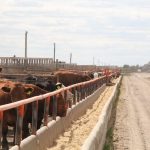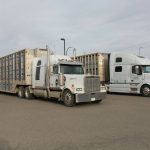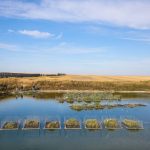
Research

Unwinding the fibre in feedlot cattle diets
How barley rolling methods and undigestible NDF affects feedlot cattle

Methane-reducing solutions for beef cattle have a ways to go, say Canadian scientists
Developers struggle with complexities of cattle rumen, logistics of cattle on pasture and lack of incentives for Canadian producers

Research shows rest stops of no benefit to feeder calves during long hauls
A recent research trial has confirmed earlier studies showing rest stops offer no health or welfare benefits to beef calves

Alberta researchers study potential of native plants to clean water in feedlot run-off
Researchers have found some native plants are effective at removing nutrients and minerals from feedlot run-off.

Evaluating forage performance in different environments
Research on the Record with Reynold Bergen

Food safety’s history in rocket science
Research On the Record with Reynold Bergen

Icebergs and native forages: What you can’t see can sink you
Research On the Record with Reynold Bergen

Food scientist says farmers are leaders in nutrition
Farmers and ranchers are feeding the world, but misconceptions about red meat and sustainability are holding them back

Responsible antibiotic use on Canadian cow-calf operations
Research on the Record with Reynold Bergen

When it comes to microbiomes in cattle, the little things may mean a lot
Research on the Record with Reynold Bergen



